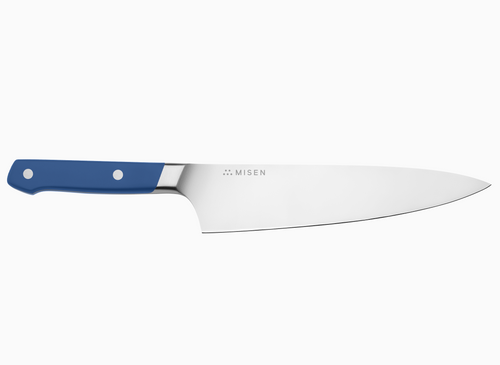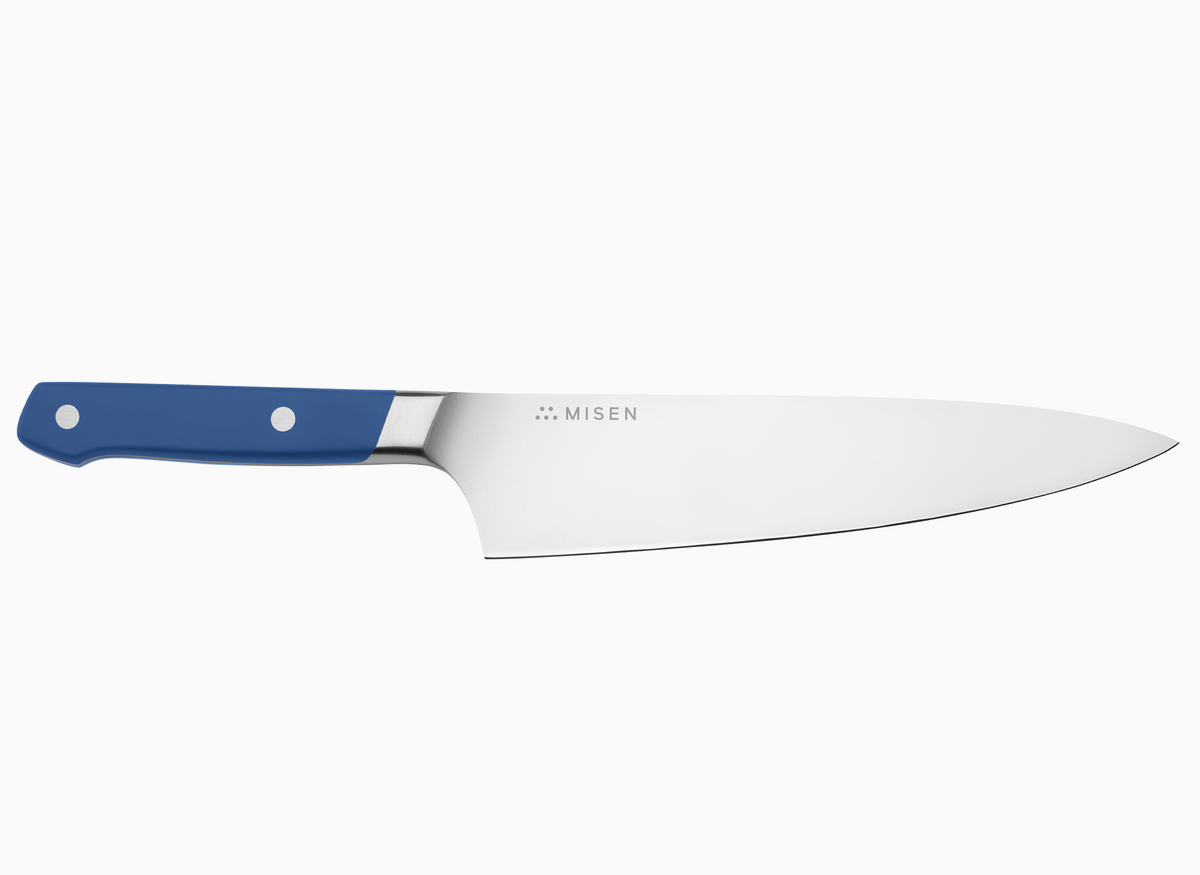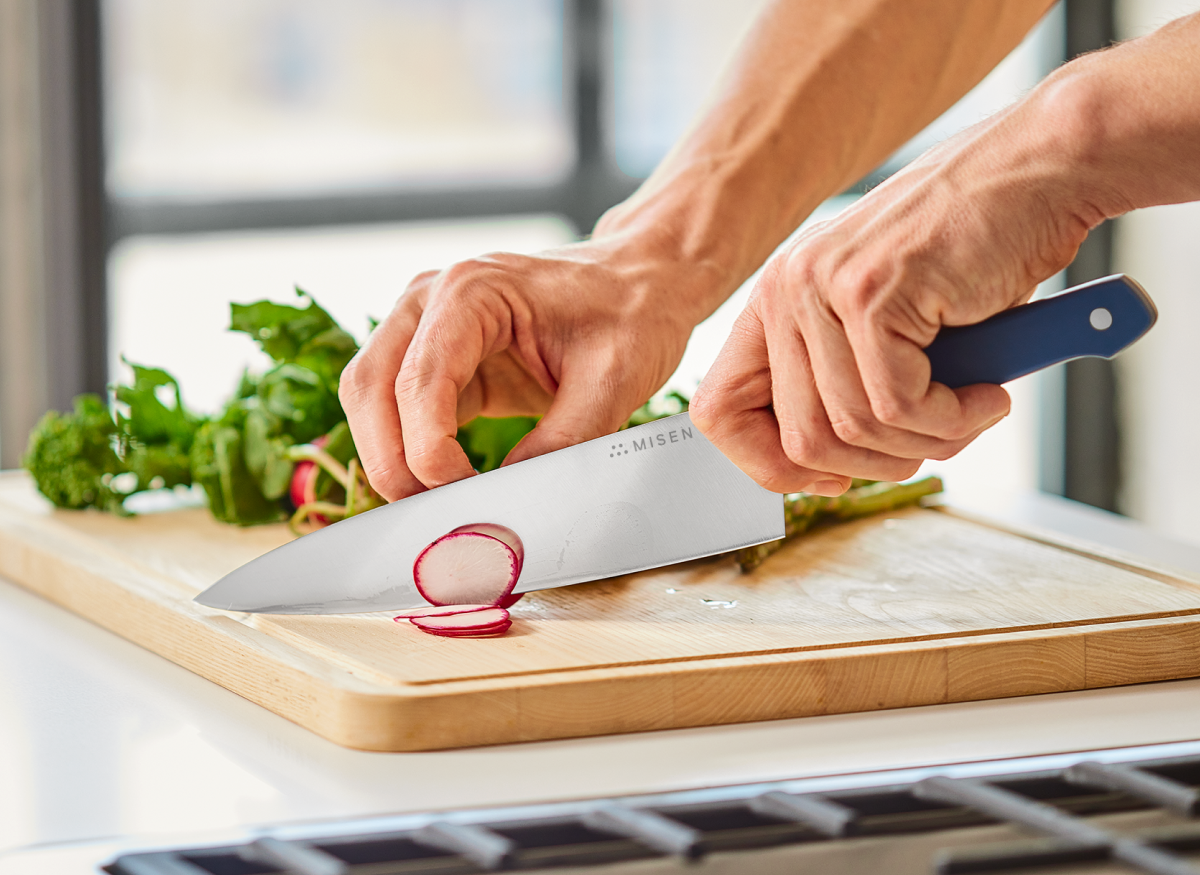Oven-Safe Skillets: Which Metals and Styles Will Suit Your Cooking Needs
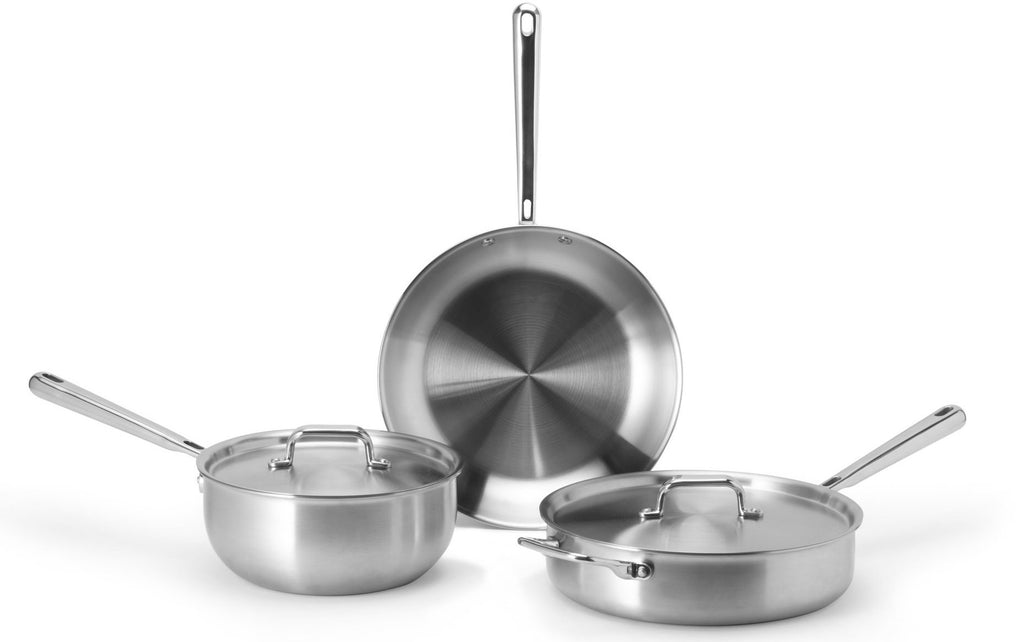 All stainless-steel cookware is oven-safe.
All stainless-steel cookware is oven-safe.
- An oven-safe skillet can give new options for your cooking abilities.
- Many skillets are oven-safe, but some have more drawbacks than others.
- There are skillet alternatives that improve upon the good qualities of a skillet.
Casseroles aren't the only bakeware item that gets to spend quality time in the oven. Certain recipes call for a skillet to be placed in the oven after cooking has begun on the stovetop. Fantastic, you say — but what kind of skillet can I use? How do I know I won't ruin it? Which part of my skillet set gets this job?
Fortunately, a variety of skillets are oven-safe. This certainly doesn't mean all of them are, but an oven-safe skillet in your cookware set can open up some options in your kitchen. From moving a sear to a braise to cooking a frittata, an oven-ready skillet gives you the flexibility you need.
We'll explore what kind of pans are safe and which ones are the best to choose.
Which Oven-Safe Skillets to Choose?
Traditionally, a cast-iron skillet is the skillet of choice for traveling to the oven. Many a roast, broiled or braised, has been cooked in cast-iron skillets. These skillets are oven-safe because the entire skillet is made of metal — meaning no part of it will melt unless you put it in a blast furnace.
Stainless steel skillets are also oven-safe as long as their handle is oven-safe as well. An all-stainless steel skillet with a metal handle is just as safe in the oven as a cast-iron skillet and offers some unique advantages, which we'll discuss in greater detail below.
An anodized aluminum skillet can also work, again with the assumption that the handle is metal or otherwise melt-proof. Similarly, copper skillets can be in the oven as long as the entire pan is metal — but be sure to always check the manufacturer’s recommendations to ensure the pan is good to go.
And, contrary to popular belief, some nonstick skillets are oven-safe as long as the temperature remains under 450-500 degrees Fahrenheit. That means while you can do a quick bake in a non-stick pan, but it's best not to broil in this pan, as high temperatures can damage the nonstick coating.
Advantages and Disadvantages of Each Skillet
Each metal comes with its unique set of advantages and disadvantages for cooking. This leaves it up to you, the fearless warden of the frying pan, to decide what to use in any given situation.
Cast Iron
 Because cast iron skillets are entirely metal, they’re safe in the oven.
Because cast iron skillets are entirely metal, they’re safe in the oven.
Cast iron has several advantages. First, it has a classic, no-nonsense look that lends itself to a feeling of gravitas in your kitchen. Second, enameled cast iron, has a much lower chance of rusting or otherwise losing its seasoning than a normal cast iron pan. Third, because cast iron pans are almost always entirely metal, they're entirely safe to use in the oven without fear of ruining the pan.
However, cast iron has several disadvantages. If the pan is not enameled, for example, it can't handle acidic foods for a long period of time, as they'll eat away at the pan's seasoning.
Second, taking care of a cast iron pan requires far more work than many other types of metal. You don't want to wash it with soap, and it is certainly not dishwasher-safe. Finally, they are quite heavy — fine if you're a weightlifter, but potentially dangerous if you're moving very hot items from the stove to the oven or vice versa.
Stainless Steel
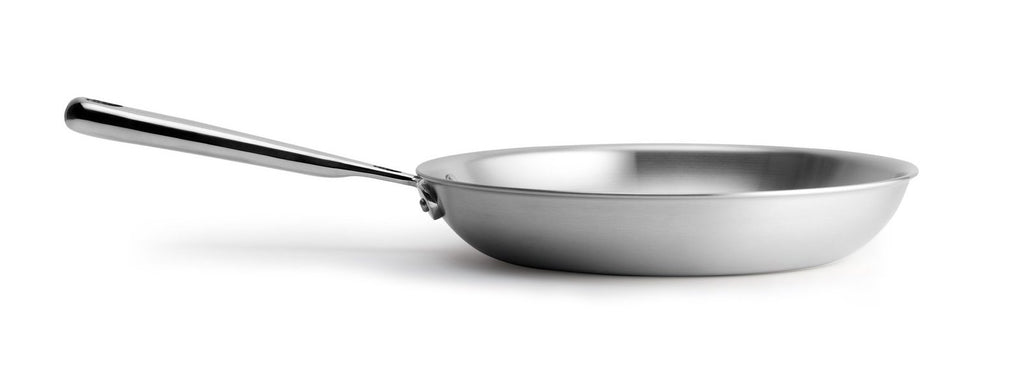 Stainless steel skillets are tough as nails and can stand up to an oven without a problem.
Stainless steel skillets are tough as nails and can stand up to an oven without a problem.
A stainless steel skillet is the best all-around choice for oven-safe use. It's very difficult to damage a stainless steel pan, even at extremely high temperatures. A stainless steel skillet can take a beating both in the oven and in the dishwasher.
Because there's no coating on a stainless steel pan, it’s entirely dishwasher safe. This skillet is also much lighter than the cast iron skillet, so there’s no weight-lifting required to handle them with ease. Crucially, multi-ply stainless steel generally features an aluminum core, which allows for fantastic heat distribution without the reactivity of a 100% aluminum pan (which can make acidic foods take on a metallic taste).
The only real downside to a stainless steel pan is also one of its strengths: Because it's not nonstick, some bits of food may get stuck to the bottom of the pan. However, from these flavorful bits come many a delicious pan sauce through deglazing.
Aluminum
Aluminum can certainly work in the oven. It is used all the time in the form of aluminum foil to act as lining on cookie trays and the wrapping around meat in a smoker. Unfortunately, aluminum is a much better conductor of heat than a retainer — meaning that food can take much longer to cook in an all-aluminum skillet than it would in a stainless steel or cast iron skillet.
Additionally, aluminum is a reactive metal, meaning that any acidic foods cooked in it — like tomatoes, for example — will end up with an unpleasant metallic taste.
Copper
As with any all-metal pan, copper can be used in the oven. Copper has a long history of culinary use and continues to retain its popularity in worldwide kitchens. It's an excellent conductor and retainer of heat.
Copper has three main drawbacks. First, a copper skillet is often significantly more expensive than any other skillet in the same category. Second, like cast iron and aluminum, copper is a reactive metal unless it's lined. Very few people would say "Wow, this food tastes like copper! It's great!"
Third, copper is difficult to take care of. It's not dishwasher-safe and requires some special care and treatment in order to remain its best self.
Nonstick
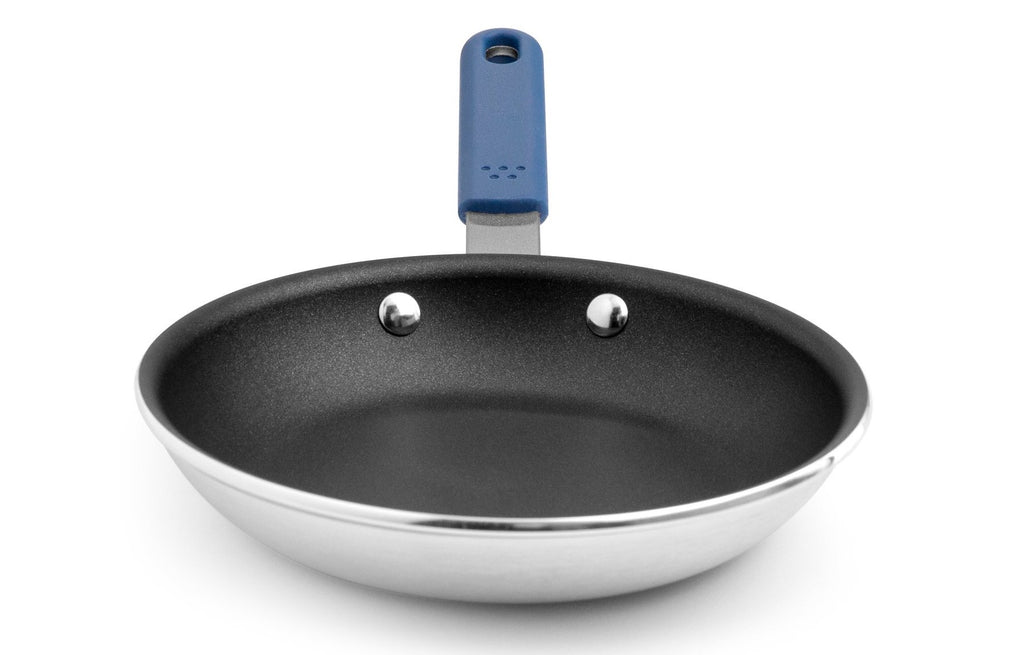 Nonstick skillets can be oven-safe in some circumstances.
Nonstick skillets can be oven-safe in some circumstances.
As mentioned above, a nonstick pan can be oven-safe if it's designed to be. Many are not, so check the manufacturer's notes before putting your nonstick pan in the oven. Some nonstick pans have plastic handles which would melt and lead to a ruined pan, a ruined oven and, worst of all, a ruined meal.
Some nonstick pans are designed to be oven-safe. If they have a silicone handle that can handle (no pun intended) high temperatures, they're good to go as long as you don't put them on the highest temperature setting or use them under the broiler. Nonstick pans aren’t meant for high temperatures, since very high temperatures can damage the coating.
Nonstick pans have the distinct advantage of being, well, nonstick — so food will slide right out when you're done cooking it.
Note that nonstick cookware is generally not dishwasher-safe and that you need to use special, non-metal utensils when cooking so that you don't damage the non-stick lining.
Alternatives
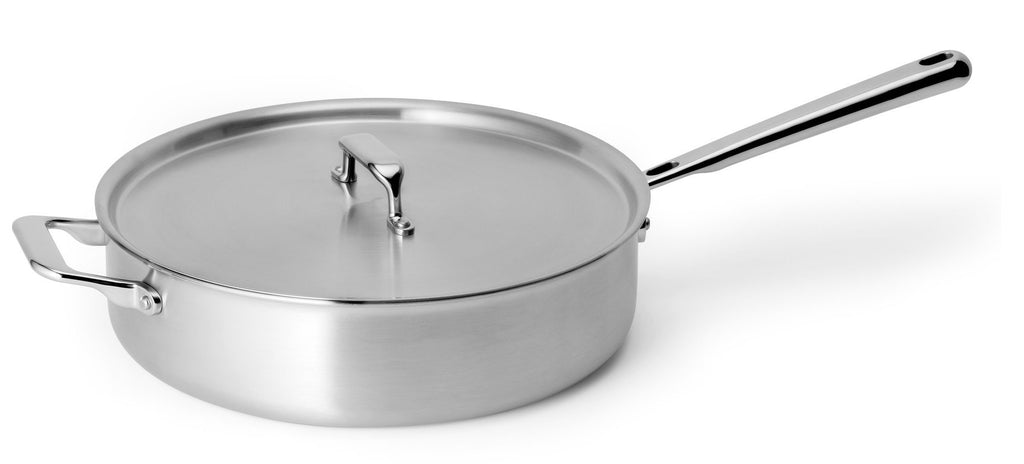 A sauté pan is an excellent alternative to a skillet in the oven.
A sauté pan is an excellent alternative to a skillet in the oven.
Although a skillet can certainly go in the oven, some alternatives to skillets can accomplish the same job in a different way.
A Sauté Pan
A sauté pan is a type of fry pan that resembles a skillet but differs in a few key ways. It looks like a deep skillet with straight sides. Notably, its shape is different than a traditional skillet and allows for more cooking surface and volume. It's ideal for searing, braising, stewing, or any other cooking method that requires greater depth and volume than a skillet can offer (though ironically, a skillet is better for sautéing).
A sauté pan's greater volume means that it can often be heavier than a skillet — which is why they often come equipped with a helper handle. This handle, opposite the main handle, allows you to use both hands when moving the pan.
A Dutch Oven
A Dutch oven is, essentially, a stovetop oven, though it can go in the oven as well. Its great volume and depth combined with a lid allow it to effectively trap heat. A Dutch oven can be a great vehicle for cooking a pot roast, for example. Sear the pot roast in the Dutch oven, add your broth, and transfer the Dutch oven to your “real” oven. A jumbo Dutch oven can handle enormous amounts of food.
Choose the Oven-Safe Skillet
For convenience, sturdiness, and general ease of use, we support choosing a stainless steel skillet or even a sauté pan for oven use. Stainless steel is a kitchen workhorse. It’s hard to damage, easy to clean, and won't alter the flavor of your food.
You can indeed use a nonstick skillet in the oven, but careful read the manufacturer’s specifications for how to do so safely.
When it comes to choosing stainless steel, take a look at your options. Some companies, like All-Clad, Cuisinart, and Calphalon use tri-ply stainless steel and aluminum combined. Misen uses five-ply construction in their stainless steel cookware to further reduce hot spots and allow for an ideal cooking experience.

